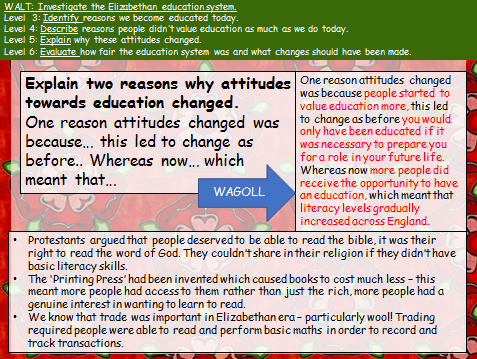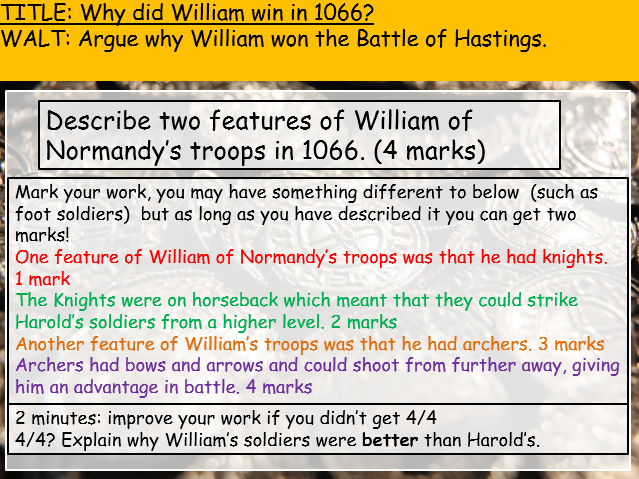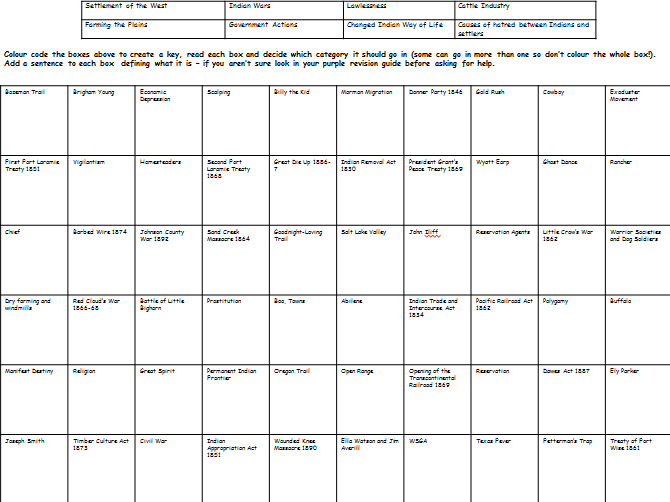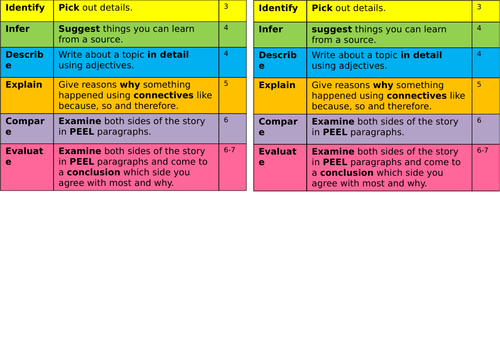
177Uploads
70k+Views
23k+Downloads
History

Controlling Religion (Weimar and Nazi Germany: Edexcel 9-1)
WALT: Analyse how far Hitler succeeded in controlling religion.
Identify Hitler’s early policy towards the Church in the Enabling Act.
Describe how Hitler hoped to control the Catholic and the Protestant Church.
Explain why not everyone accepted Hitler’s policies about religion.
Analyse a source to explain how useful it is to a historian examining the catholic response to Hitler’s reforms.
Task one: pupils examine a source from the Enabling Act explaining how Hitler wanted his relationship to look with the church and make an inference
Task two: Carousel activity - how did Hitler gain control of the church? was there any immediate opposition (covered in more detail in a church opposition lesson).
Task three: how far did Hitler succeed in controlling the church? discussion
Task Four: How useful question including structure to guide weaker pupils and key words to prompt focus on knowledge and judgement. Full mark answer accompanies so that you can go through expectations for the 8 mark question with pupils and allow them to self assess and improve their own work based on the example.

KS3 The Blitz (WW2) How useful sources
This is part of a scheme of work that prepares KS3 pupils for the GCSE reforms and skills required for KS4.
Pupils will be provided with opportunities within the lesson to build on their ability to write in PEEL paragraphs, make inferences, and analyse a source to explain why it is useful.
Pupils will:
1 identify what has happened to a building that has been bombed and explain how they know this using an inference
2. watch Pathe primary sources to examine the experiences of Londoners during the Blitz
3. Describe where shelter would be found and explain which was best and why (PEEL)
4. Analyse a source to explain why it is useful for a historian examining the experiences of Londoners during WW2.

Elizabethan England: Education
A lesson that explores the education system fully differentiated with AFL for each task.
Pupils will:
Identify what education is like today and why it is seen as valuable
Describe why not everyone valued education in Elizabethan England
Explain why attitudes changed
Analyse the education system - was it fair?
Compare the similarities and differences to education today.

Modern Medicine Revision (Edexcel 9-1)
Session covers:
new technology, lung cancer, magic bullets, penicillin and the creation of the NHS
Pupils complete a worksheet whilst teacher leads the session

REVISION Succession crisis and events of 1066 (Anglo-Saxon and Norman England (Edexcel 9-1))
This is part of a series of revision sessions aimed at preparing pupils to succeed at the Edexcel 2016 specification: Paper Two Anglo-Saxon and Norman England.
As part of this session pupils will explore:
Succession crisis: who should be king?
Gate Fulford
Stamford Bridge
Hastings
Why did William Win
Aftermath: march on London, Submission of the earls
Bundle

KS3 WW2 bundle
This unit of work has been created to embed and develop skills required at KS4 within KS3 written responses. Skills developed include source work (Interpretations and sources) as well as narrative account, consequences, and PEEL paragraphs.
Bundle includes lessons about:
D-Day
Defeat of France
Hitler’s defeat
Invasion of Poland
Operation Barbarossa
Pearl Harbour
The Blitz
WW2 Dictators

Chronology (What is history? (KS3))
Pupils explore the concept of chronology and how it supports historical learning, they are also introduced to the concept of a turning point and identify turning points in their own lives/across history. Includes a chronological order game of significant events from history.
WALT: define chronological order and apply this skill to historic events.
L3: Define what the term chronological means.
L4: create a timeline of events from history in chronological order.
L5: Explain what a turning point is.
L6: Apply skills to a timeline of my own life and evaluate the biggest turning point in my life so far.

How useful (skills builder/revision lesson) (WW1 Medicine on the Western Front: Edexcel 9-1)
THIS FULLY DIFFERENTIATED LESSON HAS BEEN PLANNED TO FIT HALF WAY THROUGH THE WW1 MEDICINE UNIT (AFTER THE CHAIN OF EVACUATION) BUT WILL ALSO BE DELIVERED AS A REVISION LESSON AT THE END OF THE COURSE TO CURRENT EXAM CLASSES.
I HAVE USED MY KNOWLEDGE AS A PAPER THREE MARKER TO CREATE A ‘HOW TO GUIDE’ FOR ANSWERING THE 8 MARK UTILITY QUESTION.
WALT: explore the key skills needed to reach full marks on a how useful question.
Recall the stages of the chain of evacuation.
Describe how to structure a how useful question using the mark scheme.
Explain how useful a source is to a historian enquiring about the chain of evacuation.
Analyse our work using the mark scheme to identify successes and targets.
task one: pupils put the chain of evacuation into order and describe each stage using key words only
task two: pupils annotate a mark scheme, can be done under a visualiser, using the same method as the examiners of paper three (Judgement, analysis, knowledge) discussion with pupils about what key things mean within the mark scheme.
task three: pupils annotate the sources in pairs, question prompts on the board to support less able (underline three key facts etc) before going over it on the visualiser
task four: Pupils answer a how useful question in timed conditions - this can be marked or I have included a peer/self assessment activity where pupils mark their own work and improve it using colour coding and a full mark answer.
i have included a worksheet summarising the chain of evacuation in case this is being used as a revision lesson rather than within original teaching - this may be useful for lower ability pupils within a normal scheme of work as well.

Johnson County War: Causes, conduct, consequences. (American West (Edexcel history 9-1))
Lesson that explores the causes, conduct and consequences of the JCW.
All tasks fully differentiated for HA and LA.

Norman Conquest (Edexcel history 9-1) Why did William win the Battle of Hastings?
Fully differentiated lesson with 'how far do you agree' exam question and skills work at the end of the lesson.
Pupils colour code the reasons William/Harold's tactics were better, they then analyse their leadership before considering whether it was luck/God's will that led to William winning the Battle of Hasting's.

Battle of Little Bighorn; causes, conduct, consequences (American West (Edexcel history 9-1))
Complete lesson on the Battle of Little Bighorn including exam skills work around the 8 mark importance question - pupils are asked to mark and improve a model answer.

Wounded Knee and Ghost Dance (American West (Edexcel history 9-1))
Whole lesson covers the ghost dance and the massacre at wounded knee.
Lesson fully differentiated with the opportunity for discussion as to why the Ghost dance would terrify white settlers and how they reacted to the massacre.

Titanic - who was to blame?
Group lesson, pupils work in groups to analyse sources which help them decide who was to blame for the disaster - they annotate each source before moving onto the next.
At the end of the lesson pupils are asked to evaluate who was most to blame, this task is levelled with different tasks for each attainment level.

REVISION Life and problems in England (Early Elizabethan England (Edexcel 9-1))
Part of a series of lessons covering content required for the Early Elizabethan England module in the new Edexcel specification.
This lesson covers
Poverty and the poor laws,
education,
past times,
financial weaknesses
There are also opportunities embedded to develop the skills required to answer the 12 and 16 mark questions.

REVISION Key features of the American West (Edexcel 9-1)
This is an hour revision session designed for intervention prior to examination.
Pupils will:
Describe key developments using images to prompt recall
answer a 10 question quiz to test their knowledge and highlight areas for development
complete a thinking quilt that covers the entire unit and key themes
complete three importance questions as a group (see cover image)

REVISION American West Thinking Quilt (Edexcel 9-1)
American West thinking quilt designed to provide pupils with the opportunity to make links between different events and consider their impact on the development of the American West.
I have checked through both the Pearson textbook and revision guide to ensure that all key content is included in this A3 thinking quilt.
Pupils first read the boxes and add a sentence to any that they are not sure of with the support of peers, revision guides or the teacher.
They then colour code them based on catagories they could fit into such as ‘law and order’ and ‘conflict with Plains Indians’.
You can find the lesson that this thinking quilt is a part of here:
https://www.tes.com/teaching-resource/revision-key-features-of-the-american-west-edexcel-9-1-11884964

REVISION Stresemann and recovery (Edexcel 9-1: Weimar and Nazi Germany)
This lesson covers the content required for Stresemann and recovery of Germany after the first world war for Paper 3 of the new Edexcel specification (2016).
Pupils will explore both interpretations and source questions within this revision lesson.
They will be provided with a worksheet that covers all of the steps Stresemann takes to ensure Germany is able to recover following the TOV. They can then take this home to support independent revision.
Pupils will:
analyse the Stresemann as our saviour source
Highlight key changes made by Stresemann and explain why people did and didn’t like them.
Answer the two four mark interpretation questions and plan an explain why question.

REVISION CLOCK ANGLO-SAXON AND NORMAN ENGLAND ( Edexcel 9-1: Anglo Saxon and Norman England)
The concept of a revision clock is that pupils spend five minutes completing each section - thus meaning they revise a large amount of a single topic in an hour.
this resource includes two revision clocks, i plan to provide my pupils with it printed double sided, they will complete one side in class and one side for homework.
I have based these clocks largely on the Pearson purple revision guides, the clock follows the pages from front to back.
Another technique is to ask pupils to fill out what they know in one colour, and then use a second colour to revise using a revision guide or textbook, giving them a colour coded guide to what they need to focus their revision on.

American West Consequences Revision (Edexcel 9-1)
A 10 minute task taken from a revision session I created to prepare pupils for Edexcel 9-1 American West unit.

KS3 history level descriptors for exercise books
Level descriptors for KS3 that match the GCSE reforms to encourage these skills to be developed lower down the school.
Include a description of the command word and generic sentence starters to support progress.




















